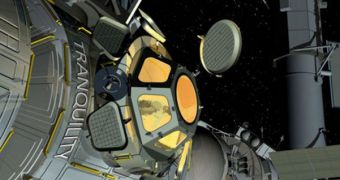In spite of not being connected to the vital liquid ammonia cooling system just yet, the new room on the International Space Station (ISS), Tranquility, was opened yesterday for the first time. Installation is not fully complete, but astronauts were curious to see what NASA's latest addition to the orbital lab looked like from the inside. The crew also inspected for dust, or sharp pieces of material that may have come loose while Endeavor was launching. They reported finding no such objects, and said that they are eagerly awaiting for the module to be “officially” opened, Space reports.
During a spacecraft on Saturday, two Endeavor crew members are expected to finally connect the liquid ammonia cooling hoses between Tranquility and its new home, the central Unity module. NASA astronauts Robert Behnken and Nicholas Patrick, the same who connected Node 3 to the ISS, will also be in charge of completing the hook-up. If their previous spacewalk is any indication, they will be racing through the new extra-vehicular activity (EVA) with ease. During their former exit to space, on Thursday night, they managed to complete their tasks so fast that they at times were as much as one hour ahead of schedule.
The 24-foot (7-meter) long Tranquility will become home to a host of very important systems on the ISS, including exercise equipment, water recycling systems and life support systems. Astronauts are expected to begin moving a large treadmill, as well as the water recyclers, tonight, even though at this point, lanterns have to be used to get some light inside Node 3. “The module looks beautiful and the atmosphere is very clean,” says NASA astronaut and ISS commander Jeffrey Williams, the leader of Expedition 22. The new room was built for a price tag of $382 million, by the European Space Agency (ESA).
On one of its many ports, engineers on the ground affixed the Cupola, a seven-windowed observation outpost that promises to provide astronauts working in space with the most amazing views possible of our planet. The central window on the ensemble is the largest ever flown to space, and it will help flight engineers conduct more accurate work with the station's two robotic arms. This will become very important in the near future, as more unmanned, resupply space capsules will be launched from various countries to the ISS. The Japanese version of the spacecraft, for example, features no automated docking system, and therefore it needs to be captured with the robotic arm.

 14 DAY TRIAL //
14 DAY TRIAL //